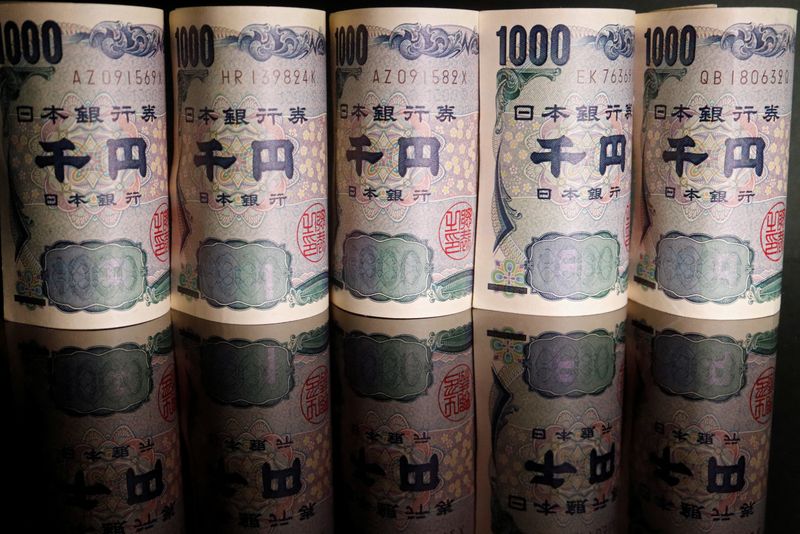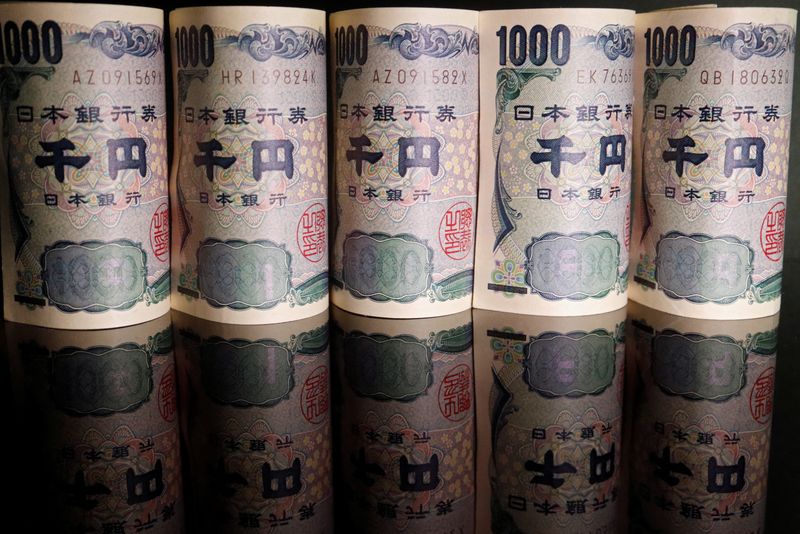Forex
Dollar softer after PCE, consumer spending data


© Reuters. Banknotes of Japanese yen are seen in this illustration picture taken September 23, 2022. REUTERS/Florence Lo/Illustration
By Chuck Mikolajczak
NEW YORK (Reuters) – The was lower on Friday following two straight days of gains, after economic data showed a cooling in consumer spending, raising some doubt about the potential aggressiveness of the Federal Reserve in fighting inflation.
U.S. Treasury yields were also mostly lower after the data.
The Commerce Department said consumer spending ticked up 0.1% in May while data for the prior month was revised to show spending accelerated by 0.6% versus the previously reported 0.8%. The personal consumption expenditures (PCE) gained 0.1% for the month after an 0.4% rise in April while advancing 3.8% on an annual basis, slowing from a revised 4.3% the prior month.
But the PCE gauges were still well above the Fed’s 2% inflation target.
“Spending was weak, especially in inflation-adjusted terms. Goods spending fell and even services spending looks to be sputtering,” said Brian Jacobsen, chief economist at Annex Wealth Management in Menomonee Falls, Wisconsin.
“Inflation is drifting lower. The off-ramp to 2% inflation is a long one, though.”
The dollar index fell 0.426% to 102.880 and was virtually unchanged on the week.
The index had risen 0.82% over the prior two sessions after comments from Fed Chair Jerome Powell and solid economic data heightened market expectations the U.S. central bank would raise interest rates two more times this year, while reducing the belief that a rate cut could be in the cards by the end of the year.
Expectations for a 25 basis points hike at the Fed’s July meeting dipped slightly, with markets now pricing in an 84.3% chance of a hike, down slightly from the 89.3% on Thursday, according to CME’s FedWatch Tool.
Chicago Federal Reserve Bank President Austan Goolsbee said Fed officials will be parsing “a lot of data” leading up to the Fed’s next meeting to assess whether borrowing costs need to be pushed up higher to tamp down inflation.
The dollar index is up 0.3% for the quarter and is poised to snap a streak of back-to-back quarterly declines. For the first half, the greenback is off 0.6%.
The Japanese yen strengthened 0.35% and was on track to snap a three-day run of weakening against the greenback at 144.26 per dollar, after briefly crossing the 145 mark with a fresh seven-month high of 145.07.
Investors have been watching to see whether the Bank of Japan (BOJ) will intervene in the currency again, which last happened at around the 145 mark, as U.S. and Japanese central bank policy plans are likely to remain counter to each other.
The greenback is up nearly 9% for the quarter against the yen, which would mark its strongest in a year.
Japan’s Finance Minister Shunichi Suzuki on Friday warned the country will take the appropriate steps should the yen continue to weaken, and warned against investors selling the yen too far, echoing similar comments from other government ministers and officials this week.
Earlier data showed core inflation in Tokyo ticked higher in June and remained above the BOJ’s 2% target for the 13th month, keeping pressure on bank policymakers to scale back their ultra-easy monetary policy.
In contrast, euro zone inflation data fell for a third consecutive month, but showed a small drop in underlying inflation and was unlikely to keep the European Central Bank from hiking rates at its July meeting.
The euro was up 0.43% at $1.0911 while Sterling was last trading at $1.2695, up 0.66% on the day.
Data showed Britain’s economy grew by just 0.1% in the first quarter, as inflation sapped disposable income in households.

 Forex3 years ago
Forex3 years agoForex Today: the dollar is gaining strength amid gloomy sentiment at the start of the Fed’s week

 Forex3 years ago
Forex3 years agoUnbiased review of Pocket Option broker

 Forex3 years ago
Forex3 years agoDollar to pound sterling exchange rate today: Pound plummeted to its lowest since 1985

 Forex3 years ago
Forex3 years agoHow is the Australian dollar doing today?

 Cryptocurrency3 years ago
Cryptocurrency3 years agoWhat happened in the crypto market – current events today

 World3 years ago
World3 years agoWhy are modern video games an art form?

 Commodities3 years ago
Commodities3 years agoCopper continues to fall in price on expectations of lower demand in China

 Economy3 years ago
Economy3 years agoCrude oil tankers double in price due to EU anti-Russian sanctions
























